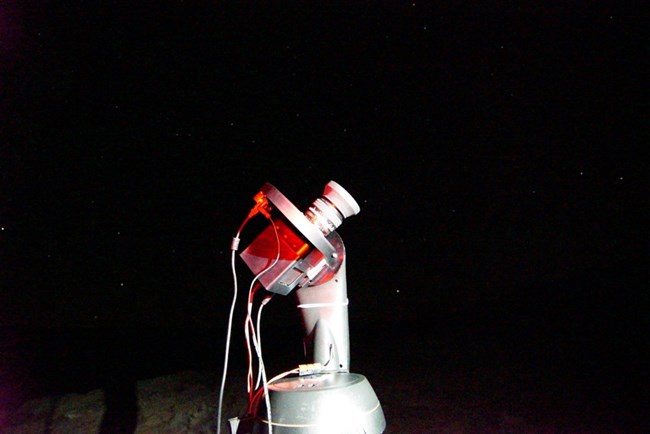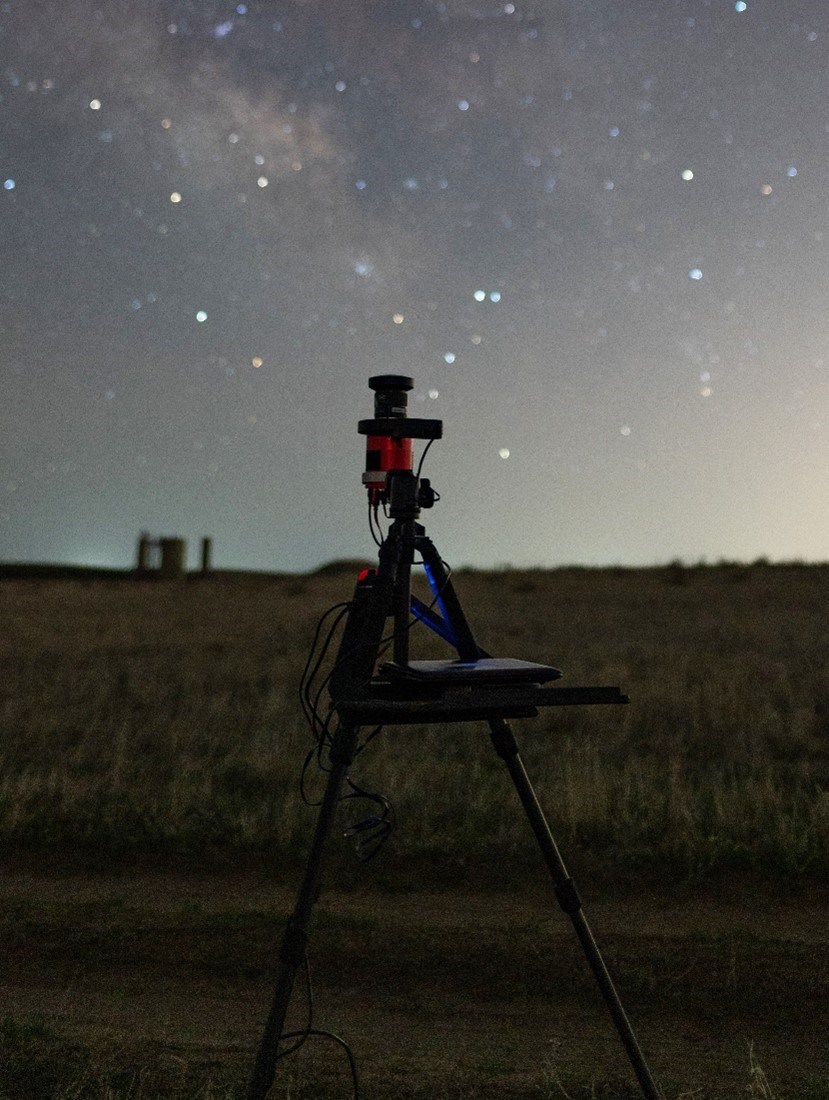
The National Park Service collects high resolution images of the night skies from horizon to horizon using two types of highly specialized camera systems:
- our mosaic camera system (Duriscoe, 2007) (figures 1-2)
- and our fisheye camera system (figures 3-4).
We've used the mosaic camera system since the early 2000s to collect high resolution images, and we use the new fisheye camera system when a park needs a quick snapshot of the entire sky or long-term monitoring of sky brightness. See the NPS Natural Sounds & Night Skies Division's published paper on the Fisheye Night Sky Imager: A Calibrated Tool to Measure Night Sky Brightness.

NPS / Li-Wei Hung

NPS / Li-Wei Hung

NPS/ Jeremy White
- Duration:
- 16.6 seconds
A time lapse video of two scientists setting up a mosaic camera system to measure night sky brightness.

Next, we separate out natural vs artificial light in the captured images. Components of natural sky brightness include zodiacal light, Milky Way, airglow, and atmospheric diffused light (see “Natural Light in Night Sky” page). Based on the time and the location of the observation, we can construct a natural sky model accounting for all these natural brightness components (Duriscoe, 2013). The modeled natural brightness can be subtracted out to obtain panoramic images showing anthropogenic light only. These assessments provide baseline conditions of the quality of the night sky and help park managers identify light pollution sources, brightness, and their impacts on the surrounding environment. This data is used to inform management actions and implement sustainable lighting practices to improve night sky resources.
Explore night sky resources across the National Park Service using this interactive map of NPS all sky data.
References
- Duriscoe, D. M., Luginbuhl, C. B., & Moore, C. A. 2007. Measuring Night-Sky Brightness with a Wide-Field CCD Camera. Publications of the Astronomical Society of the Pacific. 119, 192
- Duriscoe, D. M. 2013. Measuring Anthropogenic Sky Glow Using a Natural Sky Brightness Model. Publications of the Astronomical Society of the Pacific. 125, 1370
- Hung, L.-W., D. M. Duriscoe, J. M. White, B. Meadows, and S. J. Anderson. 2019. Night skies data report: Photometric assessment of night sky quality—Chaco Culture National Historical Park. Natural Resource Report NPS/NRSS/NSNSD/NRR—2019/1914. National Park Service, Fort Collins, Colorado.
Last updated: December 2, 2024
